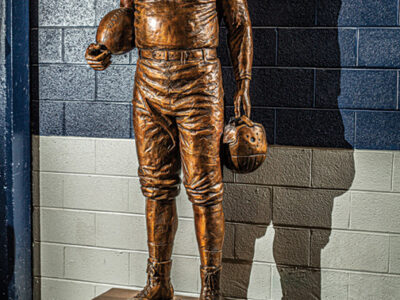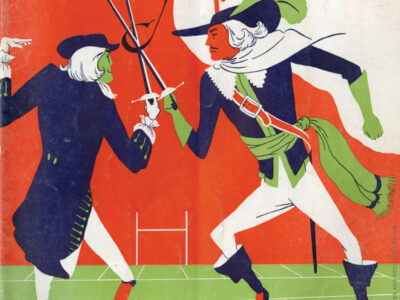While Al Bagnoli is used to trying to prevent opposing defenses from scoring, Penn’s head football coach had been far less schooled in ways to prevent concussions, a growing concern for football players across all levels.
That changed over the summer when Bagnoli, joined by fellow Ivy League coaches, trainers, team physicians, and administrators, studied the issue in the hopes of implementing new rules to lower the risk of head injuries and make the conference a safer place to play football.
Bagnoli believes this special ad hoc committee, formed by the Ivy League presidents, accomplished just that when it was announced on July 20, in a decision that garnered national attention, that the league had adopted new concussion-curbing measures, most notably stricter practice policies. Beginning this season, the league’s official announcement reads, “Practice limitations permit no more than two full-contact days per week, a 60-percent reduction from the NCAA maximum. Spring practice will see the number of allowable full-contact practices cut by one, a 12-percent reduction from current Ivy League limits and a 42-percent reduction from the NCAA maximum. Additionally, the number of days that pads can be worn during both sessions of preseason two-a-days has been limited to one.”
“The whole objective was to try to implement some rules that made sense without compromising the actual game so we wouldn’t dilute the product,” Bagnoli said. “I think we did some things that made sense.”
Sadly, the Penn football community knows why measures like these are needed. Last year around this time, a brain autopsy on Owen Thomas revealed that the lineman had stage two of chronic traumatic encephalopathy (CTE), a degenerative brain disease linked to depression and caused by head trauma [“Gazetteer,” Nov|Dec 2010]. The disease had previously been found in former NFL players who had committed suicide, but what made Thomas’ case so unique is that he never was diagnosed with a documented concussion during his playing days, leaving those in the medical community to wonder if repetitive hits to the head—or “subconcussive” injuries—can cause CTE.
According to Bagnoli, the Ivy League began looking into the issue even before Thomas’ suicide. The coach did note, however, that the autopsy results certainly expedited the process. “Obviously that kept the momentum and kept the spotlight on it,” Bagnoli said, “but this would have been done with or without that tragedy.”
Bagnoli later admitted that there wasn’t 100 percent consensus on these measures among the Ivy League coaches, some of whom felt the third full-pad practice in a week was important. “But,” he said, “when the smoke cleared, what we did will preserve the quality of play, which is a huge concern for us.”
The Ivy League, which is leading the way on this issue at the NCAA level, also announced that it would place further emphasis on educating athletes on “proper tackling technique, the signs and symptoms of concussions and the potential short- and long-term ramifications of repetitive brain trauma.” In the future, the league will also conduct similar reviews for other men’s and women’s contact sports.
“I don’t think this will be the absolute bible,” Bagnoli said. “But someone had to come up with a blueprint to start this thing off.”
—D.Z.




